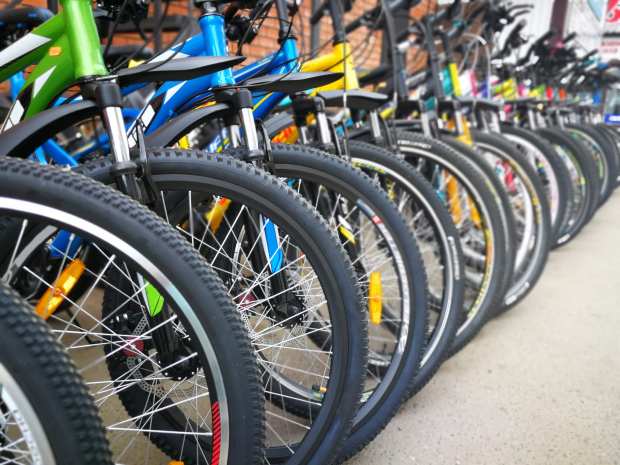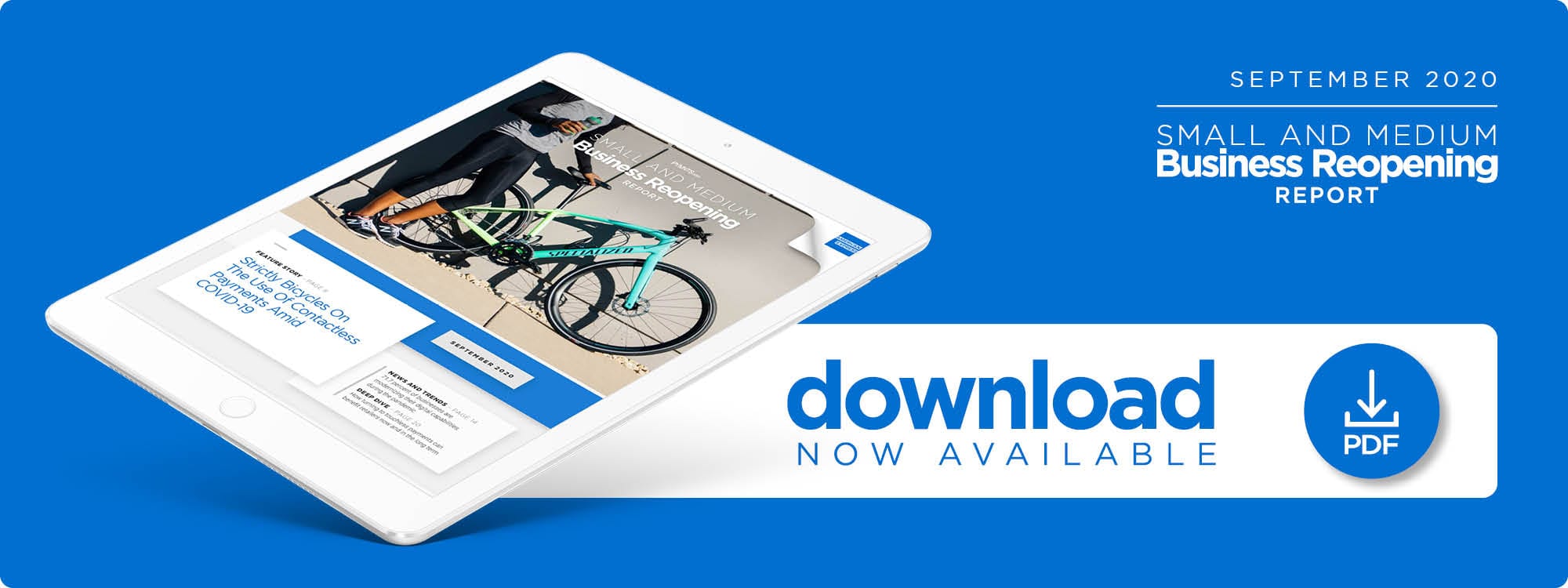Strictly Bicycles On The Use Of Contactless Payments Amid COVID-19

For many small- and mid-sized businesses (SMBs), surviving the pandemic has necessitated a transformation of their brick-and-mortar stores into virtual showrooms. But simply enabling consumers to shop online doesn’t cut it when they want to pick up and inspect products at physical stores. In this month’s Small and Medium Business Reopening Report, Strictly Bicycles’ President Nelson Gutierrez discusses how offering contactless payment options are helping bridge the online and in-store retail divide.
The COVID-19 pandemic has been challenging for all Americans even beyond the public health catastrophe, with schools shutting down, social distancing mandates limiting interactions and millions of individuals losing their jobs and facing other forms of financial hardship. In few places are the devastating effects of the crisis more apparent than in brick-and-mortar retail, where a decline in foot traffic is drying up revenue for stores that do not have an online presence. It is estimated that up to 25,000 stores could close by the end of the year, more than double the 9,832 that closed in 2019.
The stores that have kept their doors open are turning to a variety of measures to reduce the risk of infection associated with in-store shopping and to keep their businesses afloat. These include limiting the number of individuals in the store at once, reducing the use of cash and face-to-face interactions between staff and customers and encouraging the use of online options whenever possible. One such retailer is New Jersey-based Strictly Bicycles, which has managed to remain open since the outbreak began by dramatically reforming its business to conform to the new normal.
“The state closed us down for only one day before they deemed us essential, so at first we were shocked and kind of scared,” said Nelson Gutierrez, Strictly Bicycles’ president. “We had to take on the challenge of trying to operate a business that was fully brick-and-mortar with a small component of e-Commerce and totally flip it within one week to turn it into almost a full virtual showroom.”
PYMNTS recently talked with Gutierrez about how stores like Strictly Bicycles deployed click-and-collect systems and contactless payments to stay in business through the crisis.
Moving Business Online
Stores that sell bulky items like furniture, appliances or bicycles can find themselves at a disadvantage compared to many other retailers shifting their businesses online, as the very nature of their products and services prevents them from offering the experience consumers have come to expect from their transactions with eTailers. A solution known as click-and-collect, however, has proven to be a safe middle ground that is helping bring together in-store shopping and online services, according to Gutierrez.
“We [used to be] what I called a dinosaur business, [in which] over the last 26 years, we’ve been operating under a normal structure where you walk in, you get service, you purchase a bike and you leave, but [COVID-19] took that away,” Gutierrez explained. “So we took our website, which formerly existed as an online business card, and we converted it into a virtual showroom.”
Customers can pick out the inventory they wish to purchase and even pay for it online, and retailers can have it ready for them when they arrive at the store. This system is not perfect, however, as it is often used fraudulently, Gutierrez said.
“Everybody talks about how great it is to have an eCommerce site, but people fail to understand about all the identity theft that occurs [in] online retail and especially for a small business,” he said. “In a larger business, it might account for just 0.5 percent of their [revenues], but for us, one bicycle can mean 2 percent of our gross sales.”
The key to fighting fraud is ironclad identity verification for online transactions and reliance on contactless methods for those taking place in-store.
In-Store Changes
Interactions between store staff and customers can be a prime mode of exposure to infection, even if both parties are wearing masks and staying 6 feet apart. The coronavirus is notorious for its ability to survive on surfaces for several days, meaning that individuals can be infected by touching cash changing hands or even PIN pads. Gutierrez believes contactless payment methods are the key to fighting viral transmission in sales transactions.
“We’ve always been in the forefront of financing as a payment solution, with our partners doing validation online,” he said. “We also take all major [contactless] credit cards, because we really don’t want a customer to have a reason not to buy from us.”
Approximately 30 percent of Strictly Bicycles’ business comes through contactless methods, said Gutierrez, with the remaining 70 percent of customers using traditional credit card options. Customers may differ in how they pay for their merchandise, but they are united in their distaste for COVID-19-related surcharges. Many restaurants and retailers are tacking on extra fees to accommodate additional staff hours and tools for cleaning, but Gutierrez says that business will have to find a way to make it work without passing on the costs to customers.
“That is totally a negative experience for the customer,” he said. “As a retailer, we have to figure out a way to adjust that in our bottom line. We have to [find] ways to change, but we shouldn’t penalize our consumers, who are already penalized with sales tax and just trying to keep themselves safe.”
Customers and retailers are in this current crisis together as its financial ramifications push them both to their economic limits. Leveraging click-and-collect and contactless payments could go a long way toward keeping both of them safe and financially secure.

